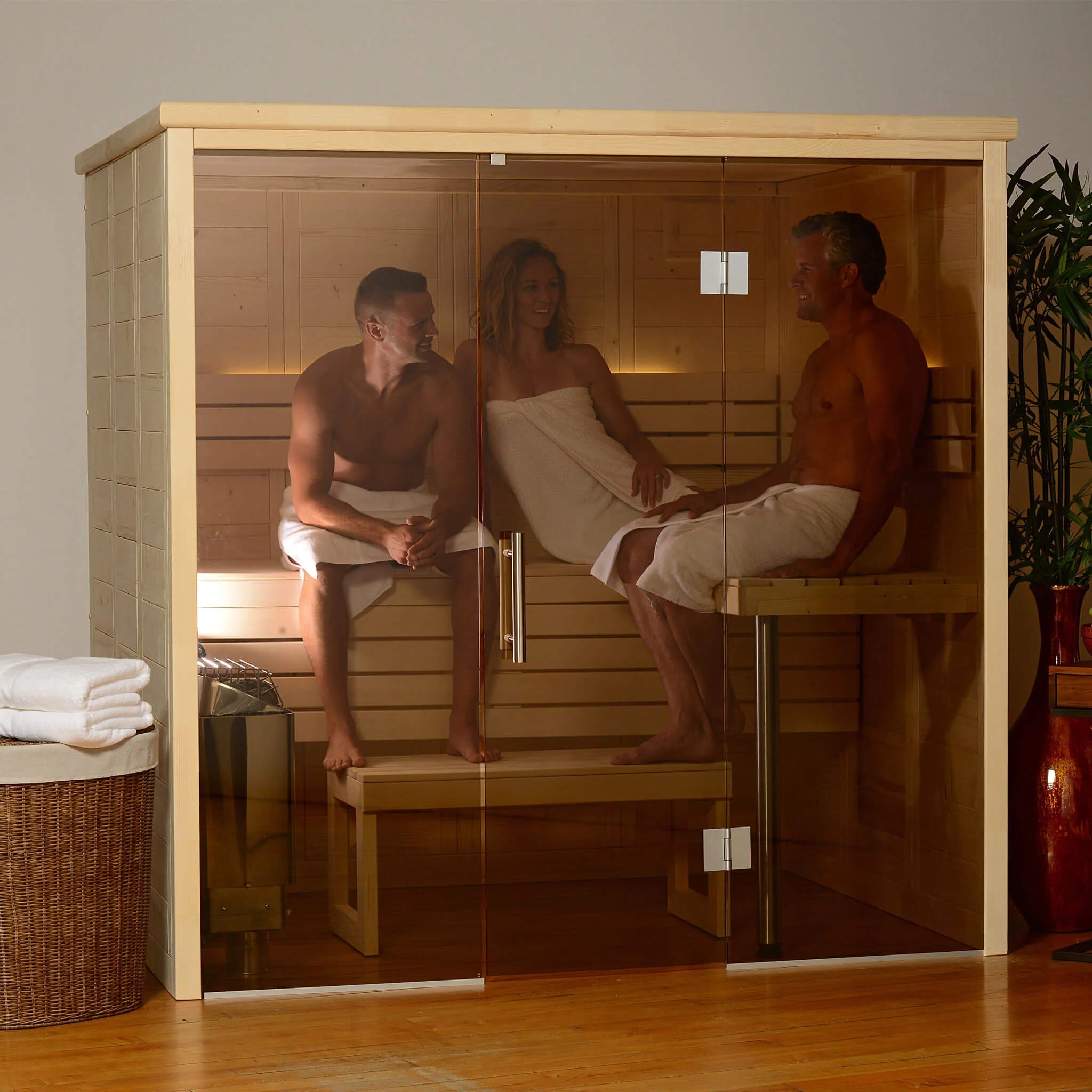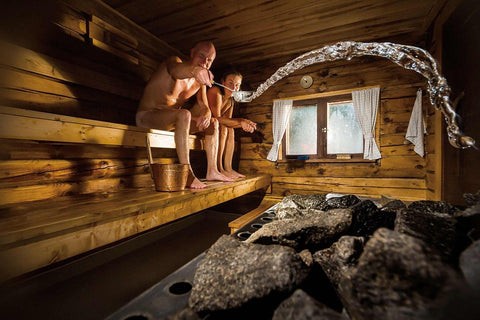Some Ideas on Traditional Sauna You Need To Know
Wiki Article
7 Simple Techniques For Traditional Sauna
Table of ContentsHow Traditional Sauna can Save You Time, Stress, and Money.5 Simple Techniques For Traditional Sauna5 Easy Facts About Traditional Sauna ShownRumored Buzz on Traditional SaunaHow Traditional Sauna can Save You Time, Stress, and Money.
Most of the weight lost in a sauna is water loss and is re-gained upon rehydrating. Without a doubt sauna can be an important part of a healthy and balanced weight loss program. To take a look at the differences in between standard and IR saunas, I will certainly divide these right into proven, academic, and made distinctions.Therefore, the hottest point in the saunawhich goes to the ceiling directly over the sauna heateris typically in between 185 and 190 F. Claims that a traditional sauna surpasses 200 F is merely not real and not suitable for electric saunas offered in the US. The temperature for a far-infrared sauna is typically established in between 120 and 140 F; nonetheless, unlike the traditional sauna, the goal in and IR area is not to achieve a heat.

When a typical sauna has actually been effectively heated, the sauna walls are cozy, the air temperature has actually achieved established temperature level and the rocks are very heated. As a fascinating side note, the warmed walls and the rocks are discharging far-infrared heat, integrated with the heated air, to produce an "covering warm".
Traditional Sauna Fundamentals Explained
When the high temperature is accomplished, the elements cycle on and off to keep the high temperature level. The majority of standard sauna individuals take pleasure in pouring water over the rocks to create steam to raise sauna moisture degrees. The benefits of putting water over the rocks consist of: making the room much more comfortable, moistening the nasal passages, and permitting the use of aromatherapy by blending essential oils with the water.

When the power goes into the body, it causes the body temperature level to enhance and inevitably results in sweating. In an infrared sauna it's essential for the emitters/heaters you could try these out to stay on nearly continuously. Given that there is no mass of rocks to preserve heat, the sauna will cool down if the emitters closed off.
About Traditional Sauna
As mentioned over, the sauna bather in find out an infrared space intends to position himself in front of operating emitters to obtain maximum gain from the warmth. The home heating time for the 2 areas can be extremely different, depending upon how the spaces are used. For a typical sauna, a bather ought to allow 30-40 minutes for the area to achieve a desired temperature and to appropriately pre-heat the rocks.
A well constructed sauna will typically accomplish a temperature of 150-160 F in regarding 30-40 minutes. For hotter temperatures, the space may need to warmth for a longer duration.
To some, 15 minutes was "wasted" while the infrared energy heated up the wood panels as opposed to warming a body, while others locate a pre-heated room to be extra comfortable and think a raised beginning temperature level is needed to begin sweating. The length of recommended usage for each area is about the same (10-15 mins per session); nevertheless, as a result of the reduced air temperatures and the capability to really feel the impacts of infrared warmth quicker than a typical sauna, it is not uncommon for an individual to spend an overall of 20-30 minutes in an infrared sauna.
Some Known Facts About Traditional Sauna.

The average cost per kWH of electrical energy in the U.S. is about $0.11, so a 4.5 kW heating system will cost around $.50 to compete one hour, if the heater runs constantly for one hour. Generally a sauna heater will compete 75% of the initial hour and 50% of subsequent hours on given that the components cycle once the established temperature is achieved.
A 2 individual far-infrared space is usually literally smaller than a standard sauna, often regarding 4' x 4' or smaller. The IR furnace is usually 1.5-1.7 kW utilizing a 120 volt 15 amp plug-in service. Since use this link the area can be made use of sooner than a sauna space, we will certainly presume the space is utilized for to of an hour including warm up time.
There is a seldom gone over distinction in the social experience between the 2 spaces. While our culture has actually shed several of the social advantage of the conventional sauna experience, it can be very socially fulfilling (Traditional Sauna). From family members time in the sauna, to heart-felt discussions with significant others, to sauna partiesthe typical sauna experience can bring about intimate socializing
The smart Trick of Traditional Sauna That Nobody is Discussing
The majority of greater end infrared areas include colored light treatment, noise systems and full-glass fronts. The dimension of most rooms enable for 2 people to comfortably use the area, while some styles may permit a 3rd or fourth person to utilize the room. Personalized infrared areas are additionally readily available, with space sizes offered as much as 7' x 8' x 7' high.Report this wiki page